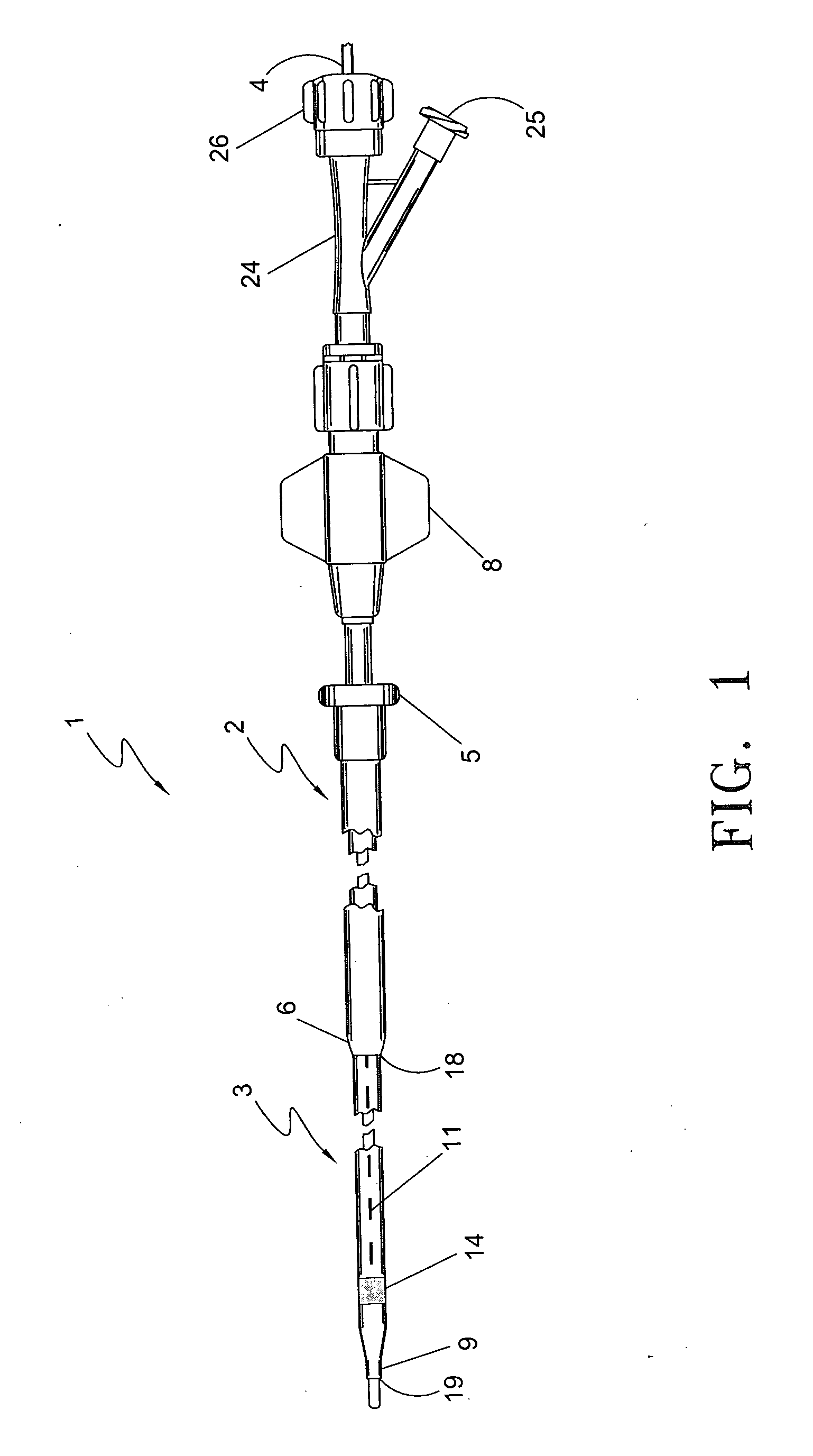Venous insufficiency treatment method
a technology for venous insufficiency and treatment methods, applied in medical science, surgery, other medical devices, etc., can solve the problems of faulty valve site, no longer preventing the backflow of blood into superficial veins, and causing pain, discomfort, and itching of legs
- Summary
- Abstract
- Description
- Claims
- Application Information
AI Technical Summary
Benefits of technology
Problems solved by technology
Method used
Image
Examples
Embodiment Construction
[0032] A method of treating venous reflux utilizing a sclerosant agent will now be described. The method of sclerosing a vessel utilizes a catheter / sheath assembly device 1, illustrated in FIG. 1 and in FIGS. 2A and 2B. FIG. 1 is a plan view of the assembled device shown with an occluding ball wire 4. The sheath 2 is comprised of a sheath hub 5, a distal tip section 6, a lumen extending from the sheath hub 5 to the distal tip 6 and terminating in a sheath end hole 18. The sheath hub 5 may include a seal to prevent blood and sclerosant from leaking. The sheath 2 body may be reinforced with ultrasonically visible material such as braided or helically wound medical grade stainless steel wire. The reinforced shaft provides the user with enhanced flexibility and pushability in addition to improved visibility under ultrasound.
[0033] The catheter component 3 is coaxially arranged within the sheath lumen and is comprised of a catheter hub 8, a distal tip 9, and a lumen 10 extending from ca...
PUM
 Login to View More
Login to View More Abstract
Description
Claims
Application Information
 Login to View More
Login to View More - R&D
- Intellectual Property
- Life Sciences
- Materials
- Tech Scout
- Unparalleled Data Quality
- Higher Quality Content
- 60% Fewer Hallucinations
Browse by: Latest US Patents, China's latest patents, Technical Efficacy Thesaurus, Application Domain, Technology Topic, Popular Technical Reports.
© 2025 PatSnap. All rights reserved.Legal|Privacy policy|Modern Slavery Act Transparency Statement|Sitemap|About US| Contact US: help@patsnap.com



